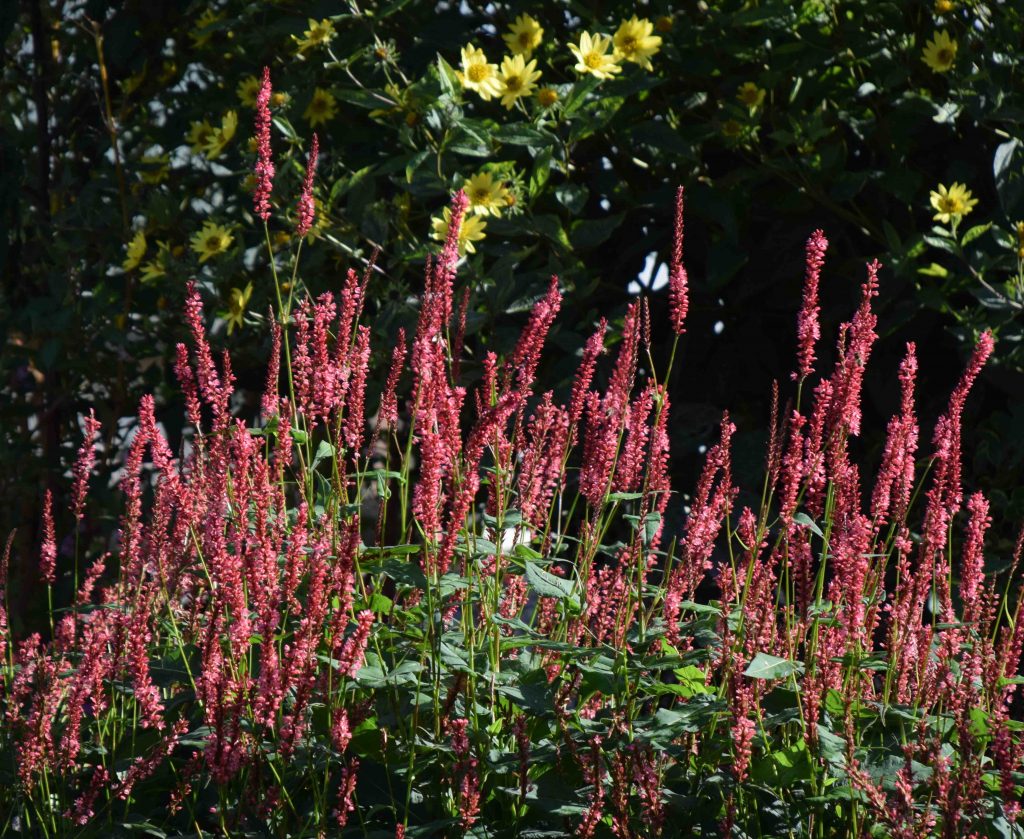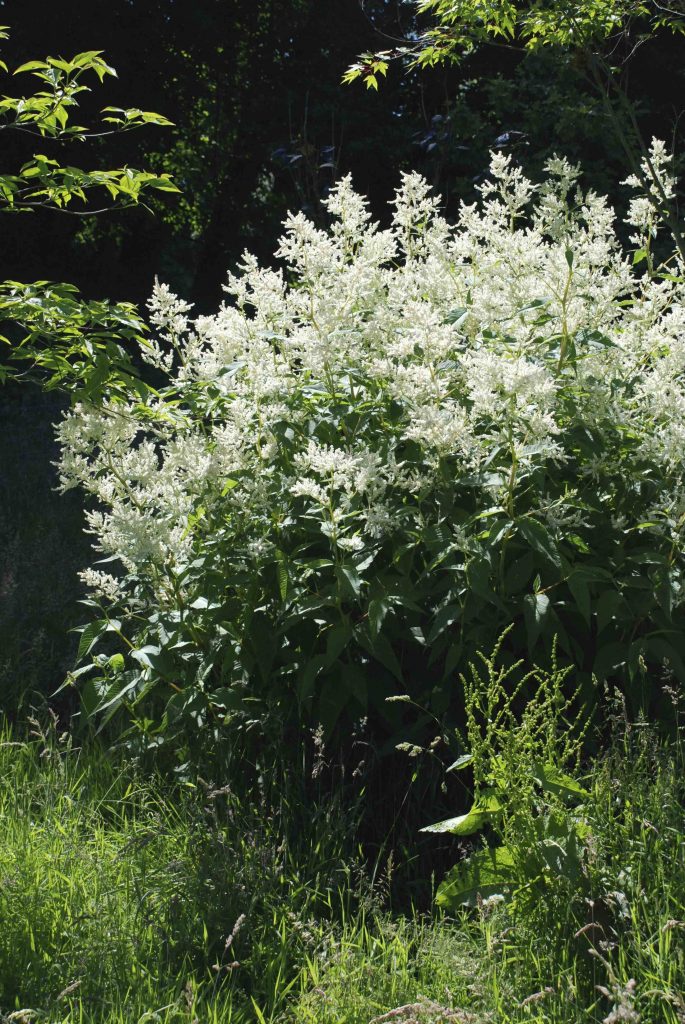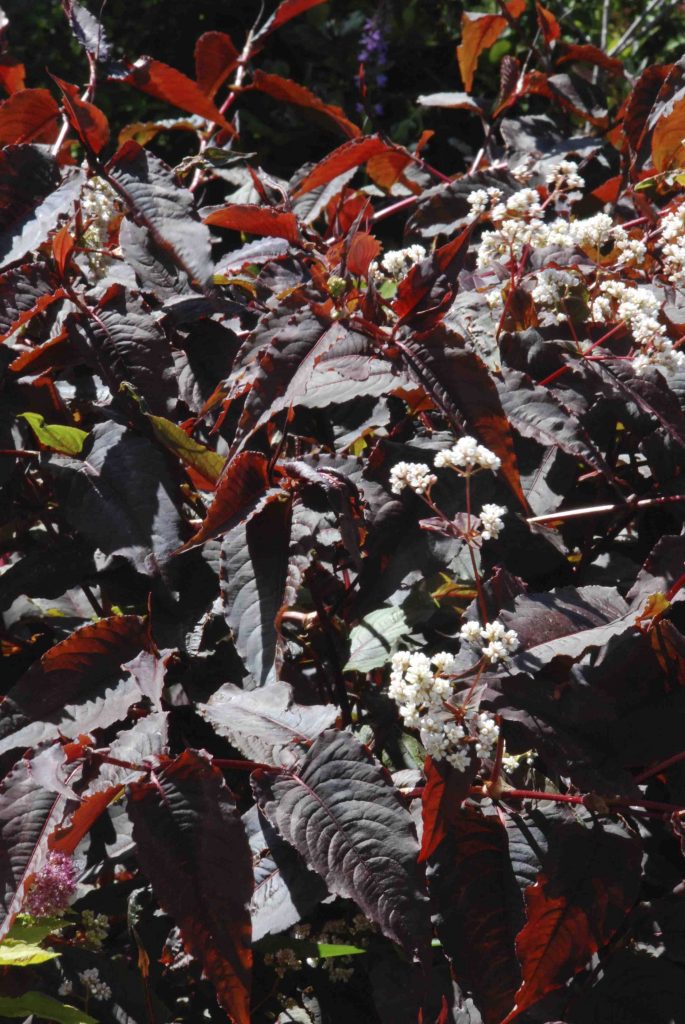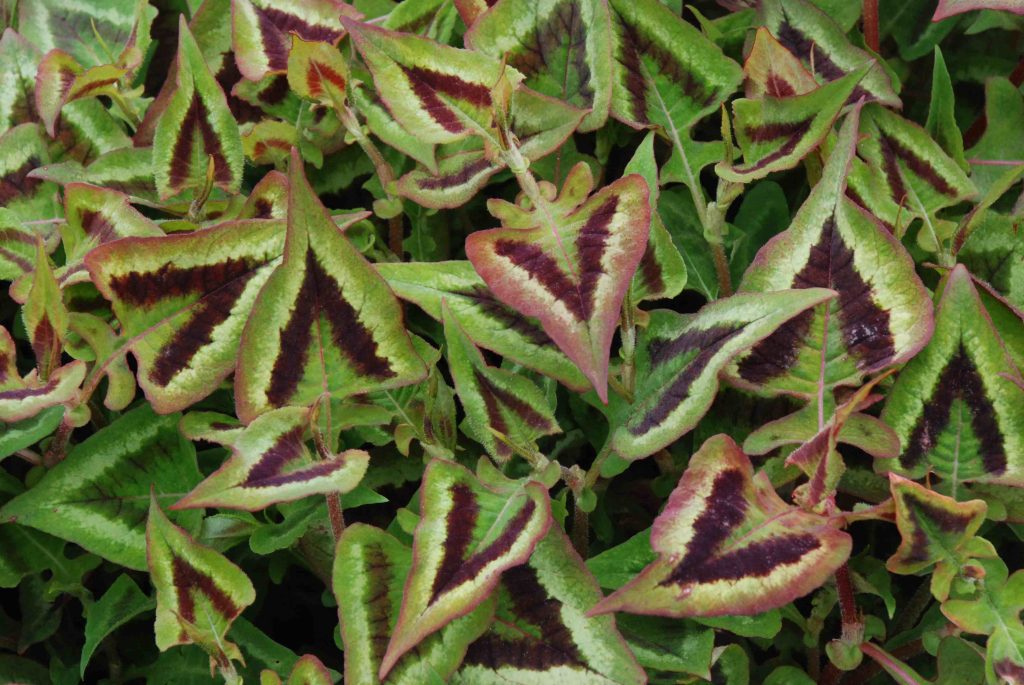
Persicarias are not terribly trendy plants, though their use in ‘Prairie Planting’ might change that. But I have planted at least a dozen in my garden and feel I should extol their many virtues.
The garden kinds are related to some awful weeds including the dreaded ‘Japanese knotweed’ but don’t panic and do not rule them out as colourful components of your garden. Most are well-behaved and they flower for months. The flowers are individually small but they create quite a show. I have always liked them but they have earned a place in my heart because they are so easy to grow, tolerate poor and heavy soil and are so generous with their blooms. I have added lots in my garden and all but one are perfectly behaved – and I will warm you about that one!
Why grow it?
Persicarias are a diverse group but most have lush foliage, few pests or diseases and flower for months. The small flowers attract pollinators. They are not fussy about soil and do not need regular maintenance apart from trimming down in winter. Most are not attractive in winter and they can come into growth rather late in spring which can be a worry but it is normal.
Where to grow it
This is a diverse group of plants that vary from creeping ground cover to tall perennials. All are best in full sun but they tolerate part shade. They usually thrive in heavy and rather wet soils. Because of their vigour and dense foliage they are great to smother weeds, ideal for a new garden like mine, and they usually do not need staking.
Where to start
There are many species but the best place to start is with Persicaria amplexicaulis. This is a hardy, dense herbaceous plant with spikes of red flowers from July to October. It usually grows to about 80cm high and as much across. After the storm this weekend many plants have been flattened but these have stood up well because of their stout stems and slender flower stems.
Although the delicate, white-flowered kind has long been grown, a stream of new varieties have been introduced recently and they are all good. The differences are sometimes subtle but I have been collecting them and I will say that the best is ‘Orangefield’. (photo above) The flowers are not ‘quite’ orange but it is bright and colourful and starts to bloom earlier than the others. I also like ‘Golden Arrow’ which has dark pink flowers above yellow leaves. My plant is in light shade so the leaves are lime green. In full sun the leaves would be yellow but pink and yellow is not my favourite combination so I am happy with it in less vibrant colours. I have also been pleased with ‘Pink Elephant’ which has drooping flower spikes, rather like an elephant trunk. The arching flowers create a sense of movement. I have many more and all are good.

A plant that is still rather uncommon but will surely become more popular is Persicaria polymorpha. It is also known as Persicaria alpina but this is no ‘alpine’! It grows to 2m and is covered in millions of small white flowers in summer. It is too bulky for small gardens but is truly spectacular and it does not spread!
Grown more for foliage than flowers is ‘Red Dragon’ with reddish leaves. It can look straggly in a pot when you buy it but when planted out forms a rounded mound of beetroot red leaves with rather insignificant ‘popcorn’ flowers. It is a great filler and does not spread.

Many years ago I saw a fabulous plant for sale and immediately had to have it. It was persicaria ‘Purple Fantasy’ and it quickly became a glorious mound of amazing foliage. The first frost of autumn killed it to the ground and I looked forward to seeing it the next spring. It did regrow and was just as beautiful but I was alarmed to see shoots 1m away from where I planted it! This cute plant is a spreader! Although it is hardy, the new shoots get caught by late spring frosts so it often has a couple of false starts in spring but then creates a rampant ground cover. I still have it because it is beautiful, but I grow it where it can spread without being a problem!

What to do
Prepare the site well. Persicarias like rich soil. Persicaria amplexicaulis forms woody rhizomes that make a dense, woody base. You can carefully divide these in spring. If stems flop over they may root but this is rarely a problem and it is not inevitable. There are many other species including the slightly invasive P. campanulatus, which is useful in shade, but start with P. amplexicaulis which is useful and easy to manage.
Who will like this?
Anyone who wants an easy plant to use in problem places. The flowers are good for pollinators too.
Plant them with …
Because they are bulky and flowers for months they can be combined with small shrubs and are especially useful with grasses (see next week) and larger herbaceous plants.
Weekly reminders
Water camellias
The flower buds on camellias may not open till next spring but they are forming now and if plants get dry they will be damaged, leading to few blooms next year. So keep your plants constantly moist, especially if they are in pots.
Prune apples
Summer pruning of apples is especially important for trained trees. Only young growth is pruned so you wont be removing fruit. Generally, all new growth is shortened to four leaves. This encourages flower buds and slows vigorous growth.
Prune wisteria
The principles that apply to apples also apply to wisteria and all shoots, not needed to train in and extend the size of the plant, are reduced to four leaves. Remember that wisterias, like most climbers, bloom best when trained horizontally so put up more wires to train growth.
Prune plums
Before you put the secateurs away, now is the last chance to prune plums and cherries. Pruning should always be minimal but it must be done in summer when the plants are in full leaf and never in winter.